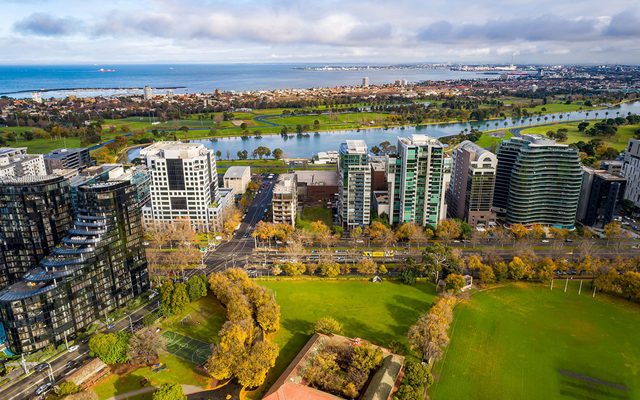This article is from the Australian Property Journal archive
SHOPPING strip precincts proved themselves to be the heart of Melbourne retail with local offerings becoming the place to grab a coffee, catch up with friends or break up the day for people working from home, as a survey found hybrid workplaces are here to stay with Gen X, millennials and baby boomers resisting a return to the five-day office week.
According to Fitzroys’ latest Walk The Strip prime metro retail strips report, shopping strips, especially those with food and beverage offerings
“The COVID period reinforced the role of the iconic neighbourhood strips as a place for Melburnians to connect with their local communities while the city endured multiple lockdown periods,” said David Bourke, director at Fitzroys.
Food and beverage was the best performing sector throughout the pandemic grew in 64% of all Melbourne strip precincts, more than double the 27% growth of specialty retail, including fashion, homewares and service retail.
Hospitality has also led Melbourne’s retail leasing enquiries in strips since the onset of COVID-19.
“This began as a way for tenants to take advantage of opportunities to quickly expand and establish themselves in new markets as demand surged for takeaway and delivery while Melburnians remained locked down,” said James Lockwood, associate director of leasing at Fitzroys.
Landlords on shopping strips had to become more responsive to changes in the market environment, coming to prioritise securing and holding a tenant above reaching an above market rental rate.
“Landlords mostly embraced the upside of meeting the market and offering incentives and flexible terms as a means of enticing tenants, whether they be shorter periods with options, greater rent-free periods, or a ‘COVID Clause’ that has quickly become an expected component of any lease,” said Lockwood.
While tenants have taken advantage of this environment by moving into larger or more prime positions for operating.
Vacancy rates varied across Melbourne’s strip precincts, with vacancies on average increasing by 2.6% from 7.7% prior to COVID’s peaks to 10.3% in 2021.
Strips like Church Street in Melbourne’s bay side suburb of Brighton, due largely to its established affluent catchment and its balanced mix of tenants, has reached a vacancy rate of 0.7%, down from 2% in 2020 and 2.7% in 2019.
Likewise strip vacancies in the affluent Toorak also fell, with Toorak Village dropping to 5.1% in 2021 from 8.1% in 2019 and Malvern Road falling from 6.1% to 5.3%.
Puckle Street in Moonee Ponds also recorded a low rate of 4.6%, down significantly from its pre-COVID rate of 8.8% and seeing a 2020 average low of 3.9%.
“Puckle Street is at the heart of the suburb’s development boom and regeneration, as well as the evolution of its retail hospitality offering that is attracting a new generation to the suburb,” said Ervin Niyaz, associate at Fitzroys.
Centre Road in Bentleigh benefitted from high supermarket sales, with the strip anchored by a Woolworth Coles and Aldi, with its rate in 2021 at 5.3%, down from 7.1% in 2019.
While Smith Street in Collingwood is an example of a strip that reaped the rewards of the massive rise in working from home, reaching 2.6% in 2020, a 0.1% drop from the previous year. The rate has however returned to a still low but elevate level of 5.1% in 2021.
“During COVID – particularly during periods of localised travel restrictions – the shopping strip became something more than a place to run errands and do the shopping. They were the place to go to get a coffee, to meet friends for a walk, or to break up the day while we were working from home,” said Bourke.
Although strips like Glenferrie Road in Hawthorn had to endure losses in customers, with Swinburne University closed, leading to vacancies rising from 7.7% in 2019 to 12.6% in 2020.
Lygon Street, Carlton also suffered under Melbourne’s lockdowns and restrictions with its vacancy rate reaching 20%, after falling to 10.7% in 2020.
“It is important to also look a little deeper into the statistics. Lygon Street, Carlton has an elevated vacancy over the last 12 months, but the prime section of the strip has continued to trade strongly,” added Lockwood.
Bridge Road, which was divided into three distinct sections, has in its Punt Road area the highest vacancy rate of Melbourne’s strips, at 24.5% up from 15.2% in 2020 and 17.6% in 2019.
Meanwhile a survey by Conference Board, a not-for-profit organisation with over 1,000 public and private corporations members across 60 countries found 55% of millennials question the wisdom of returning to the office, compared to 45% of Gen X and 36% of baby boomers.
“What’s striking is that the same workers who question returning to the workplace given high productivity while working remotely have also expressed greater concerns about mental health, stress, and burnout,” said Rebecca Ray, PhD, Executive Vice President, Human Capital at The Conference Board.
“This reinforces the need for companies to pay close attention to the well-being of their people in remote and hybrid work arrangements.”
On average, respondents believe that more than half of their organization’s full-time workers will have a hybrid work arrangement. Almost 40% will work 2 to 3 days remotely, 13% will be remote 1 day per week and on-site 4 days and 30% will be in the office 5 days per week.





